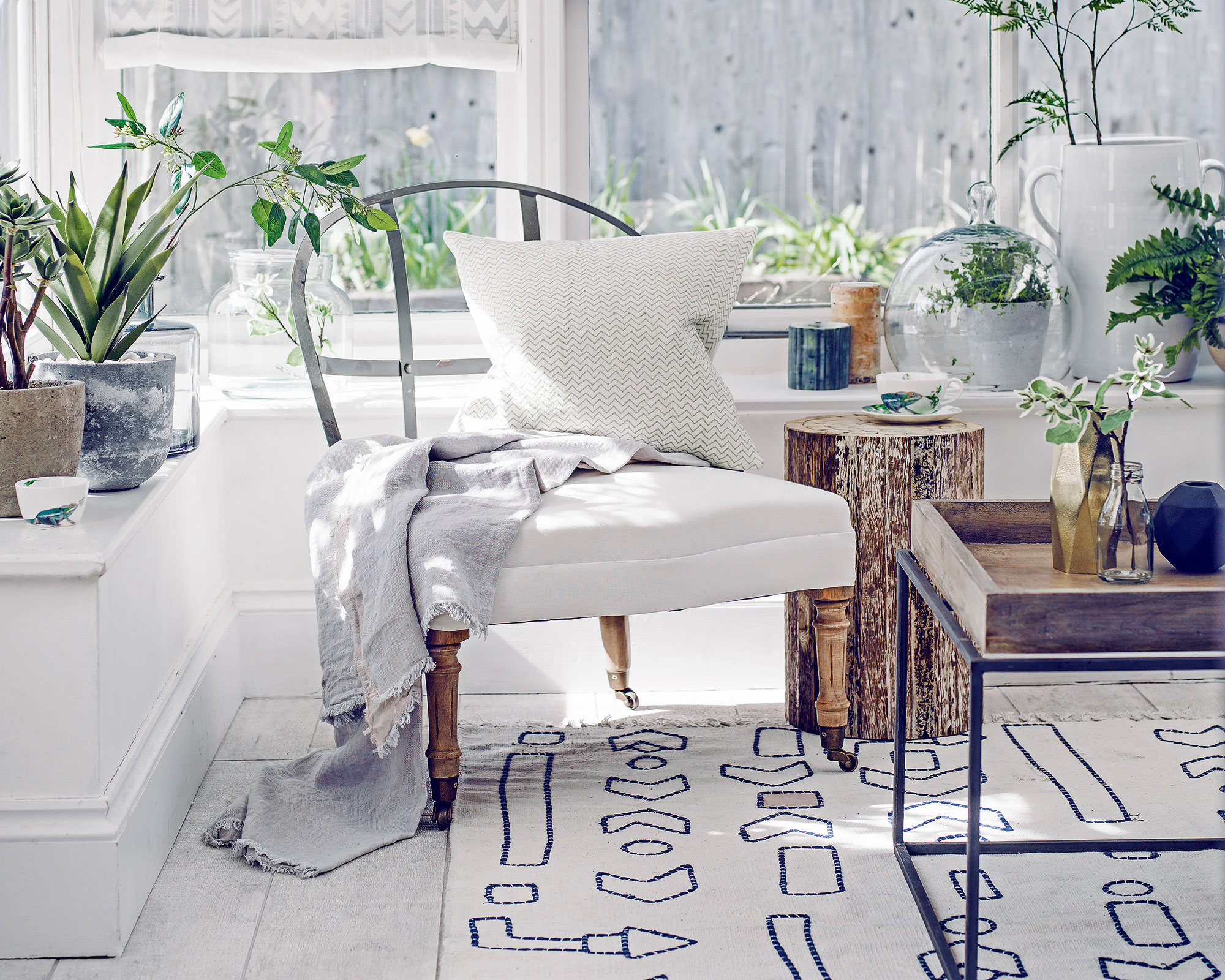
Keeping your home cool is essential during the summer months, and it is becoming more and more challenging for many of us. As summers bring ever hotter temperatures to more and more parts of the world, many homeowners are struggling to keep their homes cool even with air conditioning.
And that’s before we even get to the question of rising energy costs. If you are building a new home, or redesigning or renovating a house, you may be wondering if there are things you can do to help your home stay cool naturally, without needing to run the AC all the time.
The answer is a resounding 'yes!' From simple yet effective additions to existing homes to smart structural decisions for those embarking on building their own homes, these are the best ways to build or design a home that stays cool. Don’t take our word for it: all of the below advice comes courtesy of professional architects.
How to build a home that stays cool
First, though, you may be wondering whether it’s worth the effort to plan your home design around keeping it cool, given that you probably will have a conventional HVAC system installed anyway. Kaelen Gulbranson, Southern Utah Home Builders Association Board Member and President of luxury custom home building company Cedar Pointe Homes is emphatic that, yes, maximizing your home’s self-cooling potential is well worth the extra planning and effort.
As Gulbranson explains: 'Even the best HVAC products can become overloaded and can struggle to keep up in extreme summer conditions. To ensure an HVAC system does not become overloaded, home systems can be intentionally planned to work together efficiently to accomplish this.'
An extreme heatwave can wreak havoc on your AC units, but this is much less likely to happen if your home is designed to cope with higher temperatures. Of course, as Alessandro Ronfini, partner at DEMO Architects, points out, the exact approach to keeping a home cool will vary 'depending on the house's location. A hot and humid climate will be different from a hot and dry one.'
Nevertheless, 'some concepts will apply everywhere', and you should build or renovate your home with those guiding principles in mind.
1. Insulate!
There’s no way to overstate the importance of good insulation in keeping a home cool. And yet, many homeowners who live in hotter climates don’t think about it as much, because it’s often thought of as primarily a measure that’s important for keeping out cold weather. Alessandro breaks down the importance of insulation with an everyday example: To avoid burning our hands when touching a hot pan, 'we use a towel or an oven glove, which is nothing but insulation.'
As a bare minimum, our experts recommend insulating your roof, walls, and windows, and avoiding 'thermal bridges (ie: structural elements running from inside to outside) is the best way to avoid too much heat from transferring from the exterior to the interior of the house.'
The type of insulation you use matters too. Kaelen Gulbranson recommends opting for thicker insulation than the typical fiberglass options. If you’re building from scratch, build thicker walls. And if you have the budget for it, Gulbranson highly recommends using ICF (Insulating Concrete Forms) construction as it 'provides excellent insulation from external heat.'
2. Work out your home’s Sun Path
This option is most efficient when you are building a home. Knowing exactly where the sun will hit during the hottest part of the day (typically, between 2 pm and 6 pm) will allow you to build in a way that avoids this exposure.
Your architect or home builder will use software that can model 'the interaction between the sun and the home during the day and different seasons', says Gulbranson. This information is invaluable for positioning windows: you really don’t want a large west-facing window in an area with brutally hot summers.
3. Add shading externally
If your home is already there and you do have west-facing windows that are making your home hot, there still are things you can do to reduce the impact. 'Using exterior screens, louvers, and overhangs to create shade is a great way to avoid too much solar heat gain inside a home', says Alessandro Ronfini. Have a patio? Explore patio shade ideas to make it absorb less heat.
Note that the exterior additions will have much more of an impact than any indoor window treatments. 'Interior curtains do not work as effectively as they bounce radiation once it's already inside the house and most of it will still warm the interior air', cautions Ronfini. You’ll get better results with high-tech blinds specifically designed to repel UV radiation, but it’s still a good idea to try and block direct sunlight on the outside.
Front porch awnings and screens aren’t the only way to block out the hot sun hitting from the west. Landscaping additions can go a long way here; Gulbranson and Ronfini both recommend adding shade trees to the sunny side of your property. Just make sure the plants you’re choosing can stand the heat.
4. Focus on enhancing air exchange
If you’ve ever lived through a heatwave you will know that opening the window to try and cool the house down will make things even worse. In situations where the heat is prolonged and/or extreme, any outside air that gets in without being cooled down first will make your home hotter.
The solution? Gulbranson summarizes it as 'build tight and ventilate right.' First, you’ll want to make sure that your home isn’t leaking hot outside air in. A blower door test can be performed to check how much outside air is leaking into the home. Then, 'A Zip System® wall sheathing and tape helps keep hot, unfiltered, unconditioned air from entering your home and, if properly installed, can significantly reduce the home’s air leakage.'
Of course, as Alessandro points out, these steps do not mean 'that ventilation, natural or passive, should not be used’’; it’s just that ‘‘we want to make sure that if we introduce air in the house we also think about how to extract it and we can control its humidity.' So, we're looking to improve ventilation not eliminate it.
Both of our experts recommend installing ventilation systems like ERV and HRV: these 'mechanically create a controlled airflow and regulate its temperature, providing fresh air and minimum heat gain from the exterior', says Alessandro. Both use a heat exchanger to convert hot outdoor air into cooler indoor air.
5. Rethink exterior materials
Whether you are building or renovating a house, rethinking the exterior materials you use can make a dramatic difference to how well your home will cope with the heat. Gulbranson recommends focusing on concrete, brick, stone, and stucco as these materials 'slow the transmission of heat from the exterior to the interior of the home.'
If you were thinking about building a wooden home in a hot area, please reconsider. Equally, using wood cladding on an existing property isn't the best option in terms of keeping your home cool.
Roofing materials can also make a huge difference to the cooling ability of your house. 'Lighter color roofing does a better job reflecting heat away from the home. Concrete, slate, or clay tile is effective as they have good thermal insulating qualities.'
Do these heat reduction methods work in any climate?
These are the steps you can take to build or design a home that stays cool. They are universal and will make a difference in any climate. Having said that, additional measures will depend on your exact location and building requirements and will require a mixture of expertise in building science, technology, and smart home solutions. Kaelen Gulbranson recommends 'working with local experienced professionals when considering how to increase the thermal efficiency of your home.'
Do ERV or HRV systems cost money to run?
Yes, both ERV and HRV air ventilation systems require electricity to run. However, they are substantially cheaper than traditional air conditioning, because the energy they use is offset by the heat recovered from the exhaust air.
The better insulated your home, the less your energy expenditure with these systems will be.







